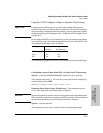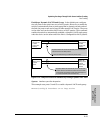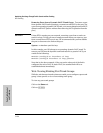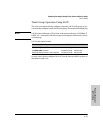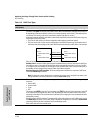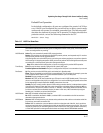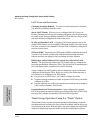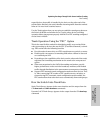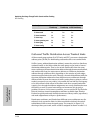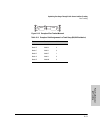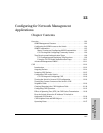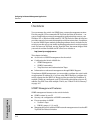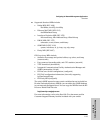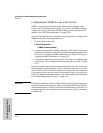
11-29
Optimizing Port Usage Through Traffic Control and Port Trunking
Port Trunking
Ports: Traffic Control
and Trunking
regard for how that traffic is handled by the device at the other end of the
trunked links. Similarly, the switch handles incoming traffic from the trunked
links as if it were from a trunked source.
Use the Trunk option when you are trying to establish a trunk group between
the Switch 4108GLh and another device, but the other device’s trunking
operation fails to interoperate properly with LACP or FEC trunking configured
on the Switch 4108GL.
Trunk Operation Using the “FEC” Option
This is the most flexible method for distributing traffic over trunked links
when connecting to devices that use the FEC (Fast EtherChannel
®
) technol-
ogy. FEC trunks offer the following benefits:
■ Provide trunked connectivity to a FEC-compliant server, switch, or router.
■ Enable quick convergence to remaining links when a failure is detected
on a trunked port link.
■ Depending on the capabilities of the device on the other end of the trunk,
negotiate the forwarding mechanism on the trunk to the non-protocol
option.
■ When auto-negotiated to the SA/DA forwarding mechanism, provide
higher performance on the trunk for broadcast, multicast, and flooded
traffic through distribution in the same manner as non-protocol trunking.
■ Support FEC automatic trunk configuration mode on other devices. That
is, when connecting FEC trunks to FEC-capable servers, switches, or
routers having FEC automatic trunk configuration mode enabled, the
FEC trunks allow these other devices to automatically form trunk groups.
How the Switch Lists Trunk Data
Static Trunk Group: Appears in the menu interface and the output from the
CLI show trunk and show interfaces commands.
Dynamic LACP Trunk Group: Appears in the output from the CLI show lacp
command.



